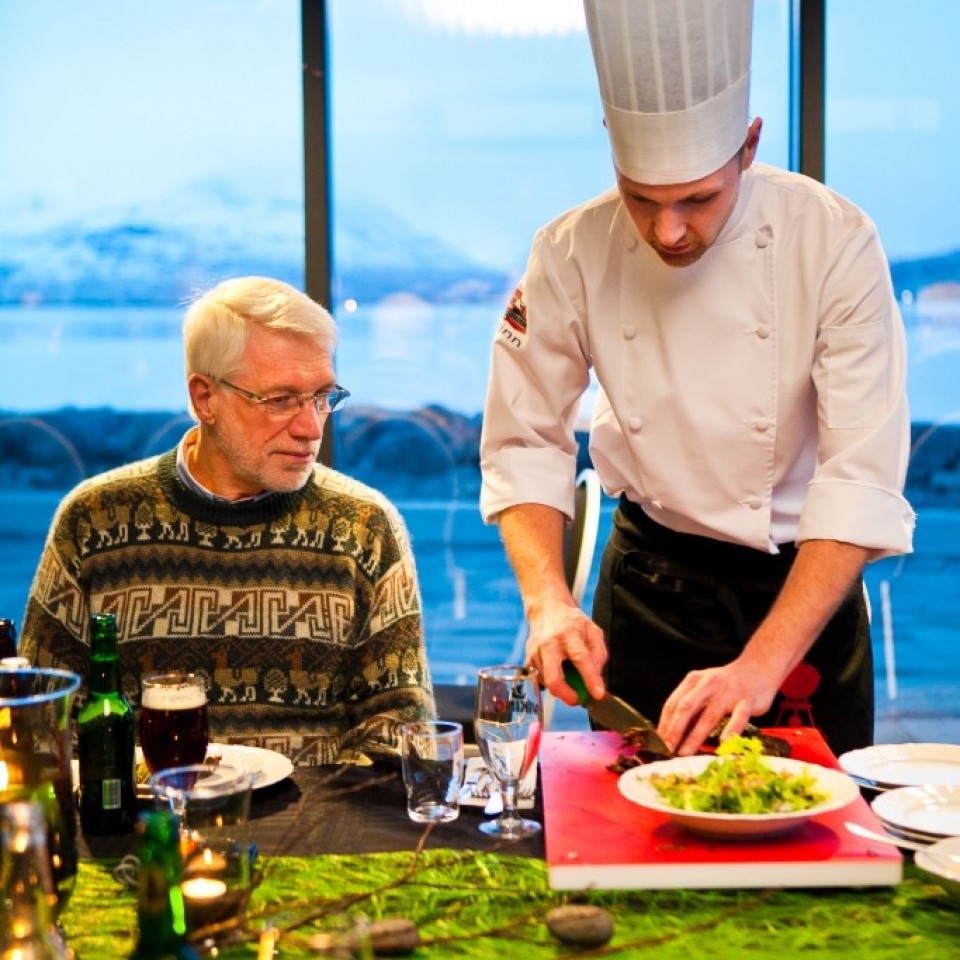In a recent trip to Iceland, Nicholas Gill explored Iceland’s rich culinary history, which he documented for the independent travel journal Roads and Kingdoms. In his account, he explored the roots of Icelandic cuisine, often accompanying chef Gunnar Karl Gíslason, owner of the game-changing restaurant in Reykjavik, Dill. The restaurant is a fantastic example of the variety of Icelandic cuisine with its menu that changes drastically from season to season. In the summer it’s full of fragrant herbs and fresh local fruits and vegetables, while in the winter, Iceland’s tradition of dried, pickled and smoked seafood shines.
Gíslason is a modern chef dedicated to his craft and his heritage, and often goes to the source for his ingredients. Gill experienced this firsthand when he traveled with Gíslason to small fishing towns hunting bright blue mussels, witnessed local farmers tending their flocks, and even climbed 150 feet over ocean cliffs to document Gíslason collecting wild seagull eggs. It’s clear that the fine dining Iceland is known for today was born from necessity. The harsh winters, beautiful but unpredictable landscape, and abundance of Icelandic fish and marine life shaped the way the country eats, and continues to pave the way in the evolution of Icelandic dining.
Gill’s article mentions some mouthwatering local delicacies described by Gílason in his youth, including “Butter whipped with lamb fat and a flaky new sea salt he had been making himself;” “thinly sliced beets wrapped around liver like Chinese dumplings,” and even “catfish that had been wind dried for more than a year, then shredded apart to resemble cotton candy, which melted in the mouth the same way.” Some other traditional dishes and ingredients include:

Icelandic Arctic Char: Served boiled, smoked and grilled, this fish has a mild, sweet flavor with a delicate texture; it has a characteristic bright red color and tastes like a cross between freshwater trout and salmon.
Skyr: A low-fat, refreshing dairy product much like yogurt, but with a milder, sweeter flavor.
Blue Mussels: Gíslason introduced these local blue mussels to his restaurant in 2010 and started a craze for them all over the country; they have a stronger, sweeter flavor than other mussels.
Seagull Eggs: A delicacy that can be eaten raw or as the main feature of a cooked dish; there is a very small window of time to collect these eggs, making them a special rarity.

What’s your favorite Icelandic dish? Tell us in the comments!


Comments
article Next
article